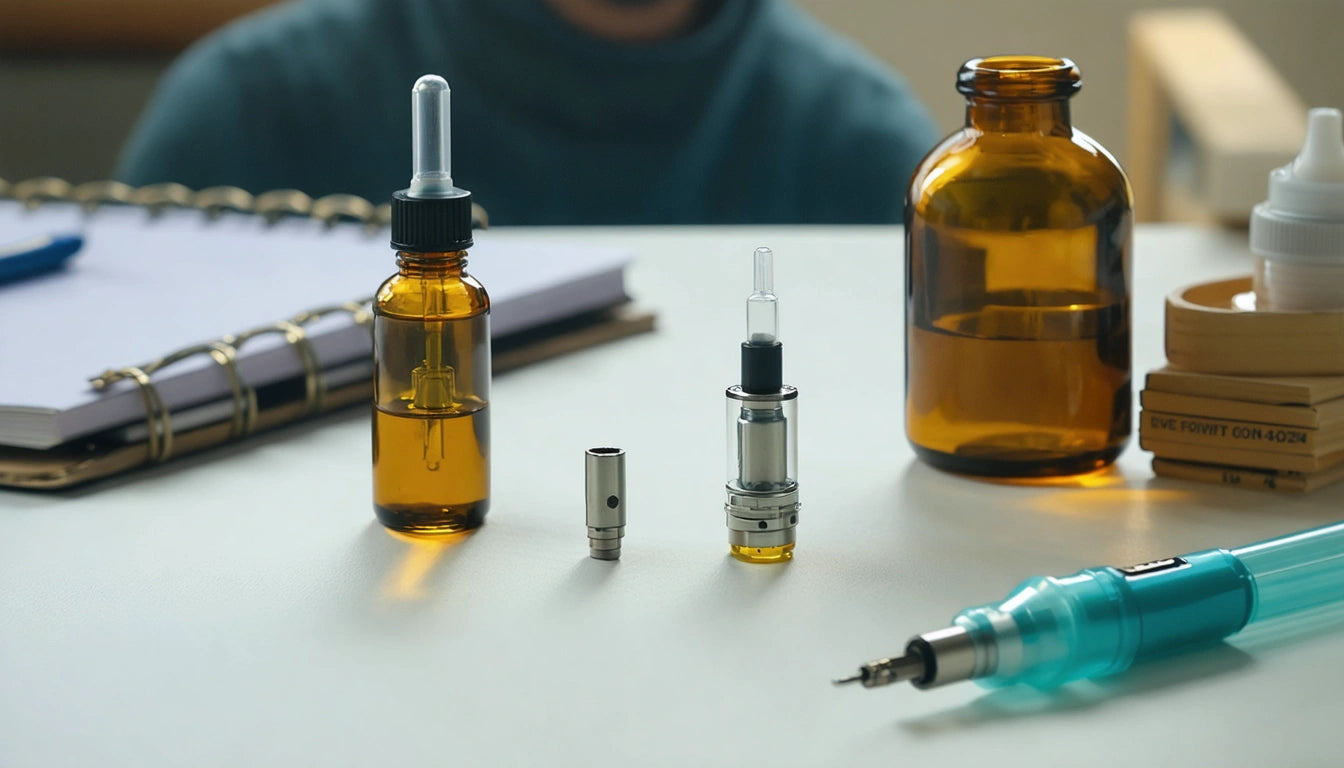Table of Contents
How to Properly Use Tinctures: A Guide to Consumption
Tinctures offer a convenient and precise way to consume botanical extracts, but knowing how to consume tinctures properly is essential for achieving desired effects. This comprehensive guide covers everything from basic consumption methods to advanced techniques for maximizing benefits.
What Are Tinctures: Understanding the Basics
Tinctures are concentrated liquid extracts made by soaking herbs, plants, or other botanical materials in alcohol, glycerin, or vinegar. This extraction process pulls out active compounds, creating a potent solution that can be easily consumed in small, measured doses.
Modern tinctures come in various formulations, including:
- Alcohol-based tinctures (typically 20-60% alcohol)
- Glycerin-based tinctures (alcohol-free alternatives)
- Oil-based extracts (often labeled as tinctures but technically infusions)
Each type has specific properties that affect how they should be consumed and stored. This comprehensive guide on making and using tinctures provides detailed information on different formulations.
Tincture Consumption Methods: Sublingual, Oral, and More
Sublingual Administration
The most common and effective method for how to consume tinctures is sublingual administration:
- Fill the dropper with your desired dose
- Place the liquid under your tongue
- Hold for 30-90 seconds before swallowing
- Avoid eating, drinking, or smoking for 5-10 minutes after
This method allows active compounds to enter the bloodstream directly through the sublingual blood vessels, bypassing the digestive system for faster onset of effects.
Oral Consumption
Alternatively, tinctures can be swallowed directly or added to beverages:
- Direct ingestion: Simply swallow the measured dose
- Mixed in beverages: Add to water, tea, juice, or smoothies
- Food incorporation: Add to sauces, dressings, or other foods
Oral consumption typically results in slower onset but potentially longer-lasting effects as the compounds are processed through the digestive system. Learn more about different tincture dosage methods to find what works best for you.
Finding the Proper Dosage for Tinctures
Determining the right dosage is crucial when learning how to consume tinctures effectively:
Start Low and Go Slow
Begin with a minimal dose (often 0.25-0.5 ml) and gradually increase until you find your optimal level. This approach is particularly important for cannabis or CBD tinctures, as sensitivity varies significantly between individuals.
Understanding Concentration
Tincture potency is typically measured in:
- Milligrams of active compound per milliliter (mg/ml)
- Percentage of active ingredients
- Ratio of active compound to carrier liquid
Always check product labeling to understand concentration before determining your dose. For detailed information on cannabis tinctures specifically, this complete guide on cannabis and CBD tinctures offers valuable insights.
Timing Considerations: When to Take Tinctures
The timing of tincture consumption can significantly impact its effectiveness:
Time of Day
Consider the intended effects when deciding when to take your tincture:
- Morning: Energizing or focus-enhancing formulations
- Evening: Relaxing or sleep-supporting blends
- With meals: Digestive support tinctures
- Between meals: For faster absorption
Consistency Matters
For therapeutic tinctures, consistent daily use often yields better results than occasional consumption. Establishing a regular schedule helps maintain steady levels of active compounds in your system.
Learn more about how timing affects tincture efficacy in this article on tincture duration, effects, and shelf life.
Safety and Storage Guidelines for Tincture Users
Proper Storage
To maintain potency and prevent degradation:
- Store in a cool, dark place away from direct sunlight
- Keep bottles tightly sealed when not in use
- Use amber or blue glass bottles to protect light-sensitive compounds
- Check expiration dates regularly
Child Safety Considerations
Tinctures, especially those containing alcohol or potent botanical extracts, must be stored safely away from children. According to safety regulations for medicinal products, special packaging designed to be difficult for children under five to open while remaining accessible to adults is essential for preventing accidental ingestion.
Many commercial tinctures now come with child-resistant droppers or caps. If making tinctures at home, consider transferring them to child-resistant containers, particularly if they contain cannabis or other potent ingredients.
For those interested in making their own tinctures, this guide on making tinctures from dried herbs provides valuable information on safe preparation methods.
Maximizing the Benefits of Your Tincture Regimen
To get the most from your tincture consumption experience:
Tracking and Journaling
Keep a log of your usage, including:
- Dosage amounts and times
- Effects experienced and their duration
- Any side effects or notable observations
This practice helps identify optimal dosing patterns and track benefits over time.
Combining with Complementary Practices
Enhance tincture effectiveness by pairing with:
- Mindfulness or meditation for stress-relieving formulas
- Exercise for energy-supporting blends
- Healthy diet choices that support your wellness goals
Understanding how to consume tinctures properly is just the beginning. With consistent use, careful observation, and proper storage, tinctures can become a valuable addition to your wellness routine. For those interested in making their own THC tinctures, this comprehensive guide on THC tinctures provides recipes and usage recommendations.
By following these guidelines, you'll be well-equipped to use tinctures effectively and safely while maximizing their potential benefits for your specific needs.











Leave a comment
All comments are moderated before being published.
This site is protected by hCaptcha and the hCaptcha Privacy Policy and Terms of Service apply.